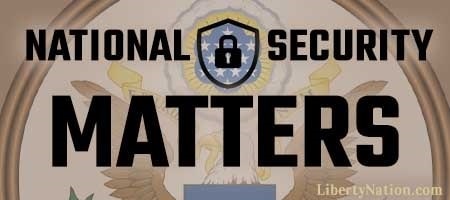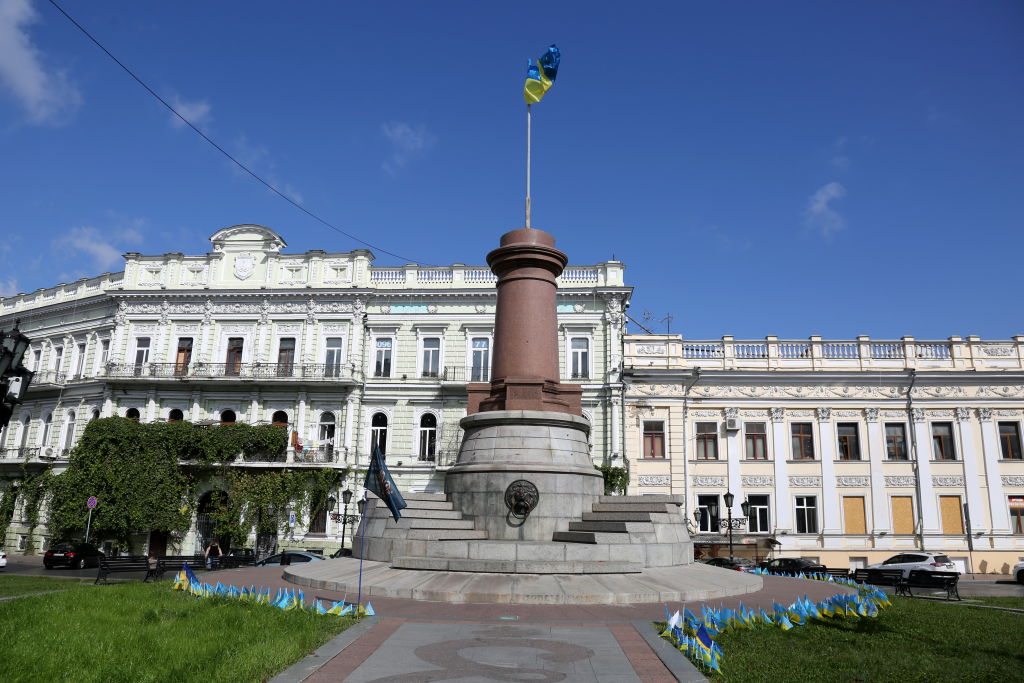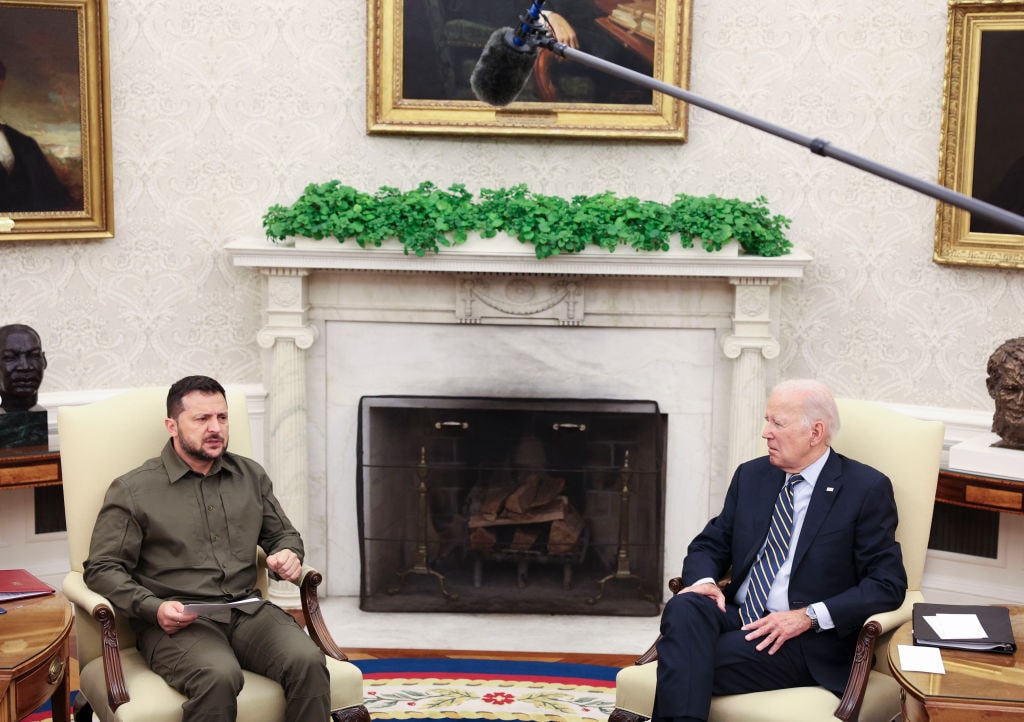There is the kernel of an idea bubbling up in some foreign policy circles advocating for US ground forces to be dispatched as advisers to assist Ukraine’s troops with fundamental soldiering skills and training in leadership. The title of this piece poses the merit of such ideas as a question. Spoiler alert: This is a bad idea. Sending US military advisers to Ukraine is specious at best and madness at its worst. Do the words “slippery slope” and South Vietnam ring any bells? The notion is truly scary. But it is how foreign policy lunacy gets its foot in the US national security door.
War Starts With a Few US Advisers
To the Biden administration, which has yet to posit a practicable strategy with clearly articulated goals, a recommendation to send advisers to Ukraine, ostensibly to bring the conflict to a more rapid conclusion, might be considered a plausible solution. It isn’t. Taking a walk down memory lane makes the reason palpable. During the last years of his presidency, President Harry Truman saw a red scourge of communism take root in North Korea and China. “Fearing that Vietnam, too, would become a communist state, he sent over transport planes and jeeps, along with 35 military advisers, as part of a multimillion-dollar aid package,” Jesse Greenspan wrote for History. France struggled to defeat the Viet Minh insurgency and retain control of its colony. “By the end of Truman’s presidency, the United States was funding more than one-third of France’s war costs.”
When Dwight D. Eisenhower became US president, he initially refused to get involved in the Vietnam conflict, but he soon succumbed to the notion of communism spreading like falling dominoes. There was a reasonable logic to that belief. US aid to Vietnam increased to almost $2 billion during Eisenhower’s administration, and the number of military advisers grew from 35 to 1,000. When John F. Kennedy became president, “the number of advisers rose to about 16,000, some of whom began engaging in clandestine combat operations,” Greenspan explained.
The progress of the slippery-slope US involvement in South Vietnam is evident in the number of American service members posted to the conflict. President Kennedy’s term saw 16,300 soldiers, Marines, airmen, and sailors involved in the country by the end of 1963. That number reached its zenith in 1968 at a whopping 536,100 under President Lyndon Johnson’s administration. Richard Nixon’s administration began the drawdown in 1969 to just 50 advisers, slightly more than Truman’s going-in figure. Over ten years of combat and 58,220 dead Americans followed the initial cadre of 35 advisers.
Vietnam Holds the Lessons to Understand Ukraine
Volumes have been written on the lessons that should have been learned from the US experience in the thinking and events leading to America’s involvement in South Vietnam. Yet those lessons have fallen on deaf ears for some. In a May 2023 commentary published in War on the Rocks, Zachary Griffiths argues from a historical perspective that US observers during combat operations in which Americans were not involved provided valuable insights, improving US tactics, strategies, and choice of weapons to develop. Lessons learned from the Yom Kippur War in 1973 are prominent in Griffiths’ case for sending US observers to Ukraine. “Diplomatic concerns kept American observers out of Israel until the war ended, but the Department of Defense’s senior leaders rushed observers in to learn immediately after,” Griffiths explained – but it’s important to point out there were no boots on the ground during the war.
 Nonetheless, Griffiths asserts: “The war in Ukraine offers another opportunity to galvanize investment around a reform agenda, but only if we send a team of observers to learn.” Griffiths’ advocacy for observers on the ground in Ukraine fails to address the inevitable: Observers move closer to the fighting to get better observations. If they are indeed seasoned experts, as Griffiths suggests, then observers become advisers in short order. When the bullets and artillery impact close by and imminent danger presents itself, advisers become fighters. And it’s game on.
Nonetheless, Griffiths asserts: “The war in Ukraine offers another opportunity to galvanize investment around a reform agenda, but only if we send a team of observers to learn.” Griffiths’ advocacy for observers on the ground in Ukraine fails to address the inevitable: Observers move closer to the fighting to get better observations. If they are indeed seasoned experts, as Griffiths suggests, then observers become advisers in short order. When the bullets and artillery impact close by and imminent danger presents itself, advisers become fighters. And it’s game on.
Only five months from the publishing of the War on the Rocks piece, Alexandra Chinchilla, assistant professor at the Bush School of Government and Public Service at Texas A&M University; and US Army Lieutenant Colonel Sam Rosenberg, a Ph.D. candidate at the LBJ School of Public Affairs, University of Texas published September 23, 2023, in Foreign Affairs: “Why America Should Send Military Advisers to Ukraine.” The military pundit class went from observers to advisers in less than half a year. Chinchilla and Rosenberg suggest:
“The United States is accustomed to providing on-the-ground military advice. It has entire organizations —the Army Security Force Assistance Brigades, Special Forces, and the Ministry of Defense Advisors Program—dedicated to providing guidance to other countries, and it should send these soldiers to Ukraine.”
The authors reassure the readers: “Critically, none of these advisers would accompany Ukrainian troops into active combat zones or help call in airstrikes.” What Chinchilla and Rosenberg have apparently failed to account for is the dynamic nature of a battlefield. What American advisers may consider a relatively safe rear echelon cantonment one hour may be a Russian envelopment demanding a survival fight by everyone to escape the next hour. It is the nature of warfare.
Russian Escalation Is Not the Escalation to Fear

(Photo by Viacheslav Onyshchenko/Global Images Ukraine via Getty Images)
Chinchilla and Rosenberg attempt to assuage fears that US advisers will cause a corresponding Russian escalation by asserting: “Despite saber-rattling that followed Western shipments of lethal aid, Russia has done almost nothing in response.” Moscow escalating the war in Ukraine as a response to US advisers on the ground is not the escalation Americans need to worry. The escalation Americans should be frightened of is the escalation by the Biden administration when the first American soldier-adviser is killed. There will be an instant call that the number of advisers is increased to ensure fewer Americans die because the war will be shortened.
Then there is the conundrum created when a NATO member, the US, has combat troops in harm’s way and experiences combat casualties inflicted by the Russians. Some will suggest invoking Article Five of the NATO charter, which states that an attack on one is an attack on all. It is what will happen as sure as night follows day.
Some writers use more recent conflicts like the Gulf Wars, Afghanistan, Iraq, or Syria as analogous measures of merit for sending US troops in harm’s way. In this case, the Vietnam War is the experience that should light the way for the US not to send advisers to Ukraine. The question is, will anyone see the light?




